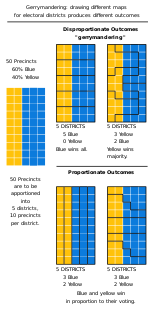A constitutional amendment is a modification of the constitution of a polity, organization or other type of entity. Amendments are often interwoven into the relevant sections of an existing constitution, directly altering the text. Conversely, they can be appended to the constitution as supplemental additions (codicils), thus changing the frame of government without altering the existing text of the document.

Referendums in Australia are polls held in Australia to approve parliament-proposed changes to the Constitution of Australia or to the constitutions of states and territories. Polls conducted on non-constitutional issues are usually referred to as plebiscites.

The Australian republic referendum held on 6 November 1999 was a two-question referendum to amend the Constitution of Australia. The first question asked whether Australia should become a republic with a President appointed by Parliament following a bi-partisan appointment model which had been approved by a half-elected, half-appointed Constitutional Convention held in Canberra in February 1998. The second question, generally deemed to be far less important politically, asked whether Australia should alter the Constitution to insert a preamble. For some years opinion polls had suggested that a majority of the electorate favoured a republic. Nonetheless, the republic referendum was defeated due to division among republicans on the method proposed for selection of the president and dissident republicans subsequently supporting the no campaign.
The 1944 Australian Referendum was held on 19 August 1944. It contained one referendum question.
The Constitution Alteration (Referendums) 1977 was an Australian referendum held in the 1977 referendums in which electors approved an amendment to the Australian constitution to allow electors in the Australian territories to vote at referendums. Electors in the territories were to be counted towards the national total, but would not be counted toward any state total.
The referendum of 13 April 1910 approved an amendment to the Australian constitution. Technically it was a vote on the Constitution Alteration Act, 1909, which after being approved in the referendum received the Royal Assent on 6 August.
Constitution Alteration 1910 was an Australian referendum held in the 1911 referendums which sought to alter the Australian Constitution to extend the Commonwealth power in respect of trade and commerce, the control of corporations, labour and employment and combinations and monopolies. All of the proposed changes were contained within the one question.
Constitution Alteration (Monopolies) 1910 was an Australian referendum held in the 1911 referendums which sought to alter the Australian Constitution to give the Commonwealth power to nationalise any corporation deemed by both houses of parliament to be a monopoly.
The Constitution Alteration 1912 was an Australian referendum held in the 1913 referendums which sought to alter the Australian Constitution to extend Commonwealth legislative power in respect to trade and commerce.
Constitution Alteration (Corporations) 1912 was an Australian referendum held in the 1913 referendums which sought to alter the Australian Constitution to extend the Commonwealth legislative power in respect to corporations.
The Constitution Alteration 1912 was an Australian referendum held in the 1913 referendums which sought to alter the Australian Constitution to give the Commonwealth legislative power in respect to industrial matters.
Constitution Alteration (Trusts) 1912 was an Australian referendum held in the 1913 referendums which sought to alter the Australian Constitution to give the Commonwealth legislative power in respect to trusts.
Constitution Alteration 1912 was an Australian referendum held in the 1913 referendums which sought to alter the Australian Constitution to give the Commonwealth legislative power in respect to monopolies.
Constitution Alteration 1912 was an Australian referendum held in the 1913 referendums which sought to alter the Australian Constitution to give the Commonwealth legislative power over industrial relations in the State railway services. The question was put to a referendum in the Australian referendum, 1913.
Constitution Alteration 1946 was an Australian referendum held in the 1946 referendums which sought to alter the Australian Constitution to give the Commonwealth legislative power over the terms and conditions of industrial employment but not so as to authorise any form of industrial conscription. The question was narrowly rejected.
Since federation, voters in the Australian territories had been excluded from voting in referendums. Constitution Alteration 1974 was an Australian referendum held in the 1974 referendums which sought to alter the Australian Constitution to enabling electors in the Northern Territory and the Australian Capital Territory to vote in referendums and for their votes to be counted in the national majority, but not towards any state total.
Constitution Alteration 1984 proposed for the third time that Senate of Australia and House of Representatives elections be constitutionally enforced to occur on the same day. The proposal was put to a referendum in the Australian referendum, 1984.
The Australian Constitution places some restraints on the ability of the State and Federal governments to freely cooperate. The Constitution Alteration 1984 proposal would have removed these barriers, such that the states and the federal government could freely interchange powers at will. The proposal was put to a referendum in the Australian referendum, 1984.

Chapter VIII of the Constitution of Australia provides the method for altering the Constitution. It contains only one section, section 128, which sets out the requirements for constitutional referendums by which the words of the Constitution may be altered.
Section 116 of the Constitution of Australia precludes the Commonwealth of Australia from making laws for establishing any religion, imposing any religious observance, or prohibiting the free exercise of any religion. Section 116 also provides that no religious test shall be required as a qualification for any office or public trust under the Commonwealth. The product of a compromise in the pre-Federation constitutional conventions, Section 116 is based on similar provisions in the United States Constitution. However, Section 116 is more narrowly drafted than its US counterpart, and does not preclude the states of Australia from making such laws.





